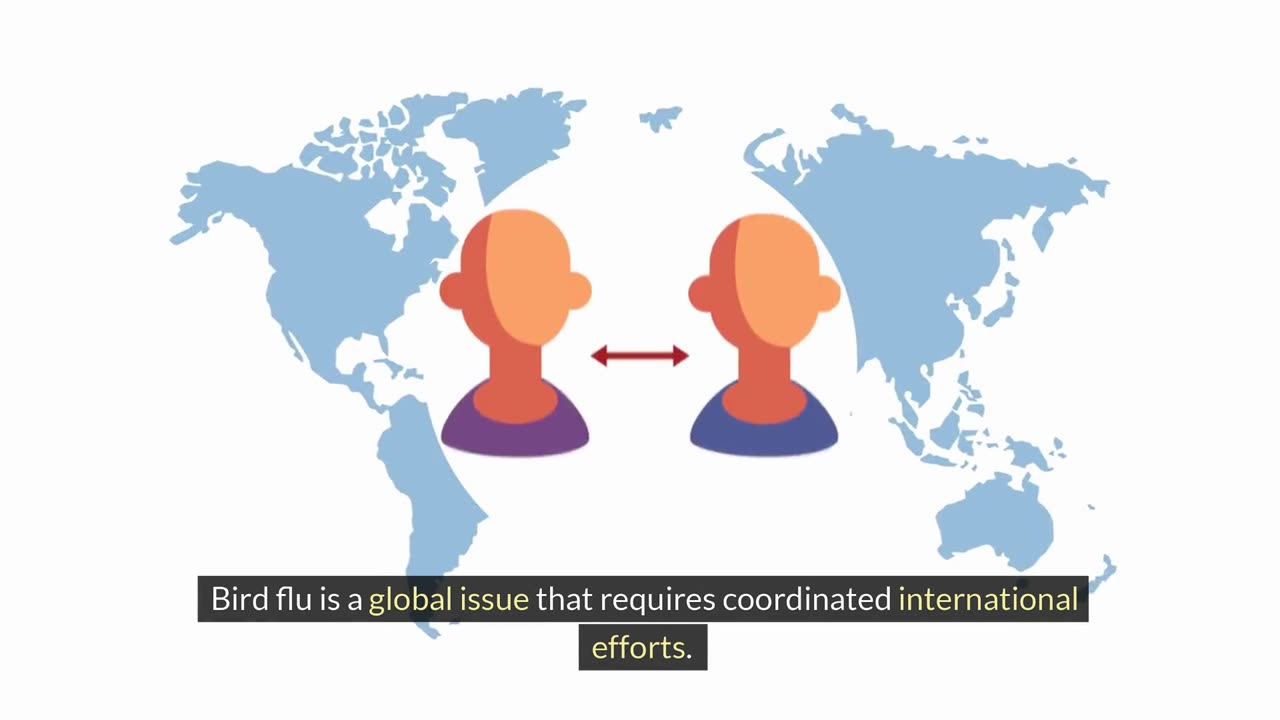Premium Only Content

A Growing Concern: Bird Flu's Impact on Humans and the Race for a Vaccine
## Introduction: The Unexpected Threat from Our Dairy Farms
Imagine waking up with mild pink eye, thinking it’s just another case of conjunctivitis, only to discover it's caused by the deadly avian flu virus. This scenario has become a reality for several dairy farm workers in the U.S., marking a troubling new chapter in the ongoing battle against bird flu. As Colorado reports its latest human case, the urgency to develop an effective vaccine has never been greater. With Moderna stepping up to the challenge, supported by a significant government contract, the fight against bird flu is intensifying. But what does this mean for public health and the future of our food industry?
## Chapter 1: The Rising Tide of Bird Flu – A Closer Look
### Understanding Avian Flu and Its Transmission
Bird flu, or avian influenza, primarily affects birds but has the potential to infect humans who come into direct contact with infected animals. The H5N1 strain is particularly dangerous, known for causing severe respiratory issues and even death in some cases. While the general public remains at low risk, those working closely with infected livestock are at a much higher risk.
### Recent Outbreaks and Human Cases
In March, the U.S. confirmed its first outbreak of bird flu in dairy cattle, which has since spread to 139 farms across 12 states, including 27 outbreaks in Colorado alone. So far, four dairy farm workers have tested positive for the virus, all experiencing mild symptoms such as conjunctivitis and respiratory issues. These cases highlight the importance of monitoring and controlling the spread of the virus to prevent a larger public health crisis.
### The Impact on Dairy Farms
The spread of bird flu to dairy farms is particularly concerning because it poses a direct threat to the dairy industry. The infection of cows could lead to significant economic losses and disrupt the supply chain, affecting both the availability and price of dairy products. Efforts to control the virus include strict biosecurity measures and, in some cases, the culling of infected herds.
## Chapter 2: The Role of Vaccination – A Crucial Defense
### Moderna’s $176 Million Government Contract
In response to the growing threat, the U.S. government has awarded Moderna a $176 million contract to accelerate the development of a human bird flu vaccine. This funding will support late-stage development and testing, with the goal of having a ready-to-deploy vaccine if the virus begins to spread more widely among humans.
### The Science Behind mRNA Vaccines
Moderna’s bird flu vaccine uses mRNA technology, the same groundbreaking approach that proved highly effective in combating COVID-19. mRNA vaccines work by instructing cells in the body to produce a protein that triggers an immune response. This method allows for rapid development and production, which is crucial in responding to emerging infectious diseases.
### The Potential for Rapid Deployment
The contract includes provisions to expedite the development process if the situation worsens. Late-stage testing is expected to begin in 2025, but the timeline could be accelerated based on the results of ongoing trials. The aim is to have a vaccine ready for mass production and distribution should the need arise.
## Chapter 3: Public Health Implications – A Balancing Act
### Assessing the Risk to the General Public
Despite the recent cases among dairy farm workers, the Centers for Disease Control and Prevention (CDC) maintains that the risk to the general public remains low. However, the situation is being closely monitored, and public health officials are prepared to take additional measures if necessary.
### Protecting High-Risk Groups
There is ongoing discussion about whether to vaccinate farm workers and others at high risk of exposure to the virus. This proactive approach could help prevent further human cases and contain the spread of the virus. The decision will depend on the results of current research and the availability of the vaccine.
### Combating Misinformation
As with any public health issue, misinformation can spread quickly and cause unnecessary panic. Clear, accurate communication from health authorities is essential to ensure the public understands the risks and the measures being taken to protect them. Public health campaigns will play a crucial role in educating people about the importance of vaccination and other preventive measures.
## Chapter 4: The Broader Impact on Agriculture
### The USDA’s Role in Controlling the Outbreak
The U.S. Department of Agriculture (USDA) is actively involved in efforts to control the bird flu outbreak in dairy cattle. This includes conducting research on potential vaccines for cattle and implementing strict biosecurity measures on affected farms. The goal is to eliminate the virus from dairy herds without the need for widespread vaccination.
### Economic Consequences for Farmers
The outbreak has significant economic implications for farmers, particularly those whose herds are infected and culled. Compensation programs and support from the government are essential to help farmers recover from these losses and continue their operations.
### Ensuring Food Safety
Public concerns about the safety of dairy products are being addressed through rigorous testing and monitoring. The FDA has confirmed that pasteurization inactivates the bird flu virus, ensuring that dairy products remain safe for consumption. Ongoing tests of retail dairy products aim to maintain consumer confidence and prevent any potential health risks.
## Chapter 5: Preparing for Future Threats
### Strengthening Public Health Infrastructure
The bird flu outbreak highlights the need for a robust public health infrastructure capable of responding quickly to emerging threats. Investments in surveillance systems, research, and vaccine development are crucial to maintaining readiness for future pandemics.
### International Cooperation
Bird flu is a global issue that requires international cooperation to effectively manage and contain. Sharing data, resources, and best practices can help countries respond more effectively to outbreaks and prevent the spread of the virus.
### The Importance of Vigilance
Continuous vigilance and preparedness are essential to prevent a repeat of the COVID-19 pandemic. By staying informed and taking proactive measures, we can mitigate the impact of future outbreaks and protect public healtA Call to Action
The recent cases of bird flu in humans and the ongoing outbreaks in dairy cattle underscore the importance of vigilance and proactive measures. Moderna’s efforts to develop a vaccine, supported by significant government funding, represent a critical step in the fight against this potential threat. By investing in public health infrastructure and maintaining a state of readiness, we can protect ourselves and future generations from the devastating impact of a pandemic.
Thank you for reading! If you found this article informative, please share it with your friends and family. Don’t forget to subscribe to our channel for more updates, like this post, and leave your thoughts in the comments below. Together, we can stay informed and prepared.
-
 2:04:08
2:04:08
Inverted World Live
7 hours agoTop Secret Area 51 Project Spawns 'Invisible Enemy' | Ep. 77
66.2K10 -
 2:51:11
2:51:11
TimcastIRL
8 hours agoUNHINGED Liberals PROTEST Colbert Cancellation In NYC, Propaganda Machine IS COOKED | Timcast IRL
197K90 -
 2:42:48
2:42:48
The Quartering
7 hours agoToday's News Chat & Act 2 Of Expedition 33
77.5K4 -
 7:42:53
7:42:53
SpartakusLIVE
9 hours agoMonday MOTIVATION || Games w/ the BOYS into the NIGHT
67.5K1 -
 3:16:02
3:16:02
Barry Cunningham
8 hours agoNEWS ON THE PLOT AGAINST THE PRESIDENT AND IT'S A MOVIE NIGHT!
101K64 -
 2:00:32
2:00:32
Glenn Greenwald
11 hours agoWorld Finally Horrified by Israel's Atrocities in Gaza; Mass Starvation Expert Warns of Spiraling Crisis in Gaza; AOC Votes to Fund Israel's Iron Dome | SYSTEM UPDATE #489
105K151 -
 8:13:52
8:13:52
Spartan
8 hours agoSpartan - Pro Halo Player for OMiT | Scrims vs OMiT Black
36.7K1 -
 2:47:11
2:47:11
crgoodw1n
7 hours agoMonday stream Pt.2! Max Traders are almost here!
30.3K1 -
 1:28:30
1:28:30
Gurk
6 hours ago $0.97 earnedMLB CO OP
31.8K -
 1:46:27
1:46:27
Tim Pool
15 hours agoSin Frontera: The End of Illegal Immigration
206K71